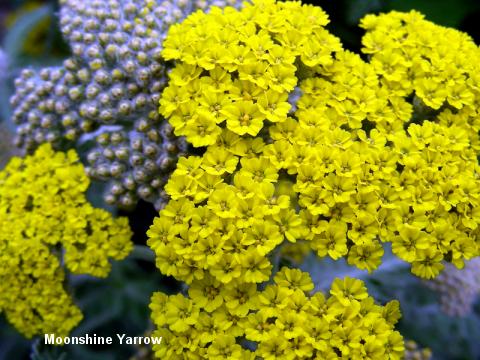Yarrow – Plant Info
Achillea millefolium or Yarrow (other common names Common Yarrow, Gordaldo, Nosebleed plant, Old Man’s Pepper, Sanguinary, Soldier’s Woundwort, Thousand-leaf, Thousand-seal) is a flowering plant in the family Asteraceae, native to the Northern Hemisphere.

Identifying Yarrow
Common Yarrow is an erect herbaceous perennial plant that produces one to several stems (0.2 to 1m tall) and has a rhizomatous growth form. It is native in California and other areas of the Western United States. Leaves are evenly distributed along the stem, with the leaves near the middle and bottom of the stem being the largest. The leaves have varying degrees of hairiness (pubescence). The leaves are 5-20 cm long, bipinnate or tripinnate, almost feathery, and arranged spirally on the stems. The leaves are cauline and more or less clasping. The inflorescence has 4 to 9 phyllaries and contains ray and disk flowers which are white to pink. There are generally 3 to 8 ray flowers that are ovate to round. Disk flowers range from 15 to 40. The inflorescence is produced in a flat-topped cluster. Yarrow grows up to 3500m above sea level.
Uses
The plant commonly flowers from May through June, and is a frequent component in butterfly gardens. Yarrows can also be planted to combat soil erosion due to the plant’s resistance to drought.
Growing Yarrow
Common yarrow is a drought tolerant species of which there are several different ornamental cultivars. Seeds require light for germination, so optimal germination occurs when planted no deeper than ¼ inch. Seeds also require a temperature of 65-75 degrees Fahrenheit. Common yarrow responds best to soil that is poorly developed and well drained. The plant has a relatively short life, but may be prolonged by dividing the plant every other year, and planting 12 to 18 inches apart. Common yarrow is a weedy species and can become invasive. It may suffer from mildew or root rot if not planted in well-drained soil.
Species
There are several varieties and subspecies:
- Achillea millefolium subsp. millefolium
- Achillea millefolium subsp. millefolium var. millefolium – Europe, Asia
- Achillea millefolium subsp. millefolium var. alpicola – Rocky Mountains
- Achillea millefolium subsp. millefolium var. borealis – Arctic regions
- Achillea millefolium subsp. millefolium var. californica – California
- Achillea millefolium subsp. millefolium var. occidentalis – North America
- Achillea millefolium subsp. millefolium var. pacifica – west coast of North America
- Achillea millefolium subsp. millefolium var. puberula – California
- Achillea millefolium subsp. millefolium var. rubra – Southern Appalachians
- Achillea millefolium subsp. chitralensis – western Himalaya
- Achillea millefolium subsp. sudetica – Alps, Carpathians
| Related Articles:
Propagation of Plants: Leaf & Stem Cutting |
